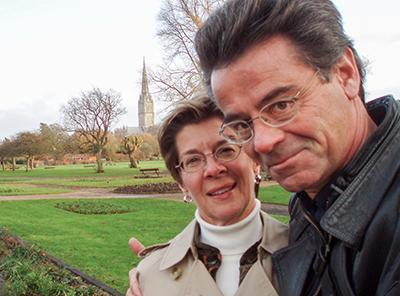
A Skeptical Donor Finds Value in Charitable Gift Annuities
 Leslie Wander grew up a Lutheran kid. As a child of a waitress and a chef, there was always enough to go around, though there was never excess. And there was always a contribution to the offering plate at church—but that wasn’t charity, that was community.
Leslie Wander grew up a Lutheran kid. As a child of a waitress and a chef, there was always enough to go around, though there was never excess. And there was always a contribution to the offering plate at church—but that wasn’t charity, that was community.
It’s the connection to community that first focused Leslie’s attention on the issue of hunger. Living in downtown Wayzata for many years, she heard of an annual campaign to raise funds and supplies for neighbors in need. “In this community?” she thought.
“The need is sneaky, but large. Once you look, you can see it. You can see it more easily in the Cities or in Faribault, where we live now, but it’s in fancy suburbs, too. And once you see hunger, you can’t unsee it.”
Leslie was formally introduced to both charitable giving and financial planning while working in food product development at Pillsbury. But both topics felt more like social pressure than anything else and felt uncomfortable.
Leslie gained clarity about her charitable giving strategy from her husband, Bob, whom she met in 2005. “My first clue into Bob’s approach to life and to others came from his children, who in their own unique ways are very service-minded. Throughout their own pursuits, they’re centered on serving others. Bob’s altruism has manifested in his life, his work, his kids, and our marriage.”
That sense of altruism led their research to charitable gift annuities (CGA). In exchange for a sizeable gift to a charity (cash, securities, or some other assets), they’d be eligible for a partial tax deduction for the donation, plus a fixed stream of income from the charity for the rest of their lives.
With their financial planning journey now shifting as Leslie settles into retirement, a CGA just makes sense. “The majority of our careers as business owners meant that we saw massive fluctuations in earnings. With a CGA, for the first time in a long time, we’re setting up to have a steady, predictable income.”
For the Wanders, a CGA allows for a blend of altruism with their need to be appropriate with the funds they have. They see it as an important component of the more conservative part of their portfolio.
“The needs are now. And there’s joy in knowing that we’re helping now, that we’re here to see our earnings going to important use.”
Leslie’s charitable giving and financial planning journey has been an evolution. “I’m pleased that the people on my journey have added perspective to my decision making.”
